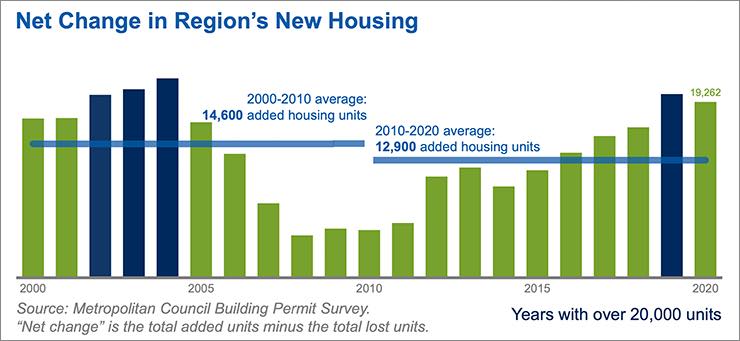The simple answer as to why the Twin Cities metro area has the worst housing shortage in the country is because, the region’s population gained 314,000 residents over the last decade, bringing the total population to 3.16 million in 2020, according to decennial U.S. census counts released August 12. The average household size according to census data is 2.28.
Significant growth occurred in both urban center cities and suburban edge cities.
During the same decade, we have added on average 12,900 housing units a year. The number is based on building permits and subtracting lost units.
When housing demand is high and supply is low prices go up.

The obvious solution is to build more housing. Yet there are many reasons why that isn’t happening. Some of those reasons have to do with zoning and the expense of building materials and labor shortages too. St. Paul is considering allowing smaller lot sizes and is considering loosening restrictions on ADU (accessory housing units). Neither of those moves will do much to ease the housing shortage or make housing more affordable but every little bit helps.
It is a shame that when houses were torn down during the housing market crash and the great recession the vacant lots were annexed by neighbors who now have larger lots. We also have a long history of tearing down houses to make room for parking lots.
I think micro-apartments and tiny houses make more sense but neither will be built because they don’t work with current zoning laws and requirements for parking spaces.
Corporations that buy up residential real estate contribute to rising housing costs in a market where there isn’t enough housing. The opportunity to buy a house and fix it up to live in has all but vanished in favor of businesses that can pay cash and flip houses.
There are other contributing factors to the lack of affordable housing but the root cause is that the population of the metro area has outgrown the housing supply.
